What if I told you that you could have a prolific spring flower garden year after year? By planting naturalizing bulbs, not only will they return every season, but they will multiply for a large and colourful garden to welcome the spring sunshine. Learn all about how to naturalize bulbs in the garden and in your lawn this fall.
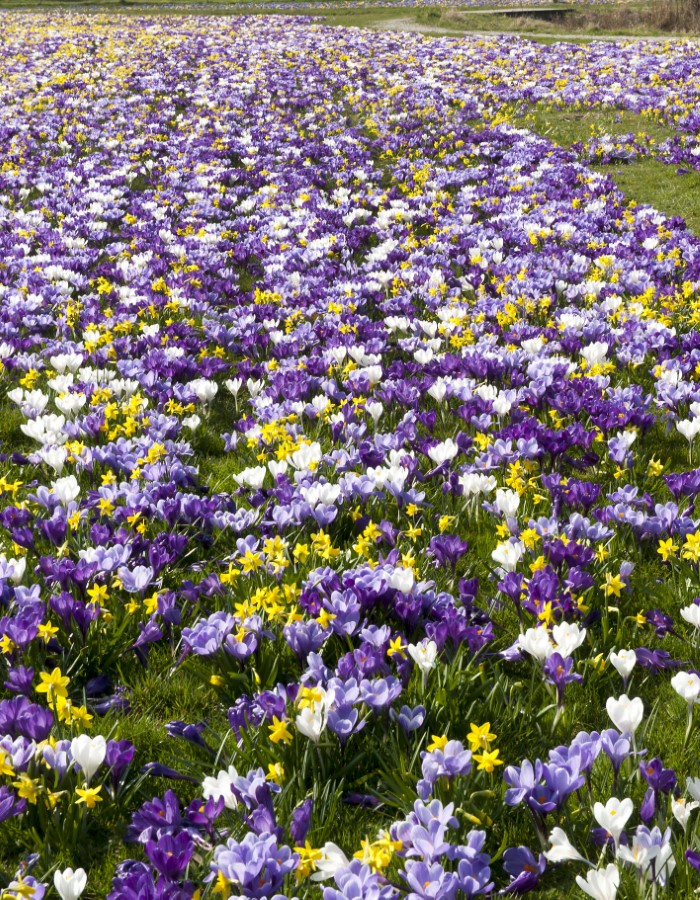
If you’re planting bulbs this fall, you definitely want to consider adding some bulbs to naturalize your garden. Next spring, and the spring after that, and after that, you will be thanking me as your yard is filled with effort-free blooms that bees and people LOVE.
It’s not only pretty and joyful, but also note that planting bulbs that naturalize makes gardening SO much easier. Once planted, they add bursts of colour every spring and will continue to spread happiness throughout the garden.
Extremely low maintenance, all you have to do is plant get those suckers in the ground come fall and let them go to work on their own. Naturalized bulbs have evolved to survive the harshest winters. After they’re finished flowering, they continue their growth below ground and come back the following year. They’ll stay quietly under the soil while your garden fills with turf grass or other plants.
As if things couldn’t get any better, they also attract pollinators. At a time of year when there is barely anything in bloom yet, these early bloomers provide nectar and pollen for the first bees of the season. Yay!
So, let’s get planting shall we?
Sponsored Content: A big thanks to flowerbulbs.com for providing the lovely images of naturalizing bulbs for this post, right?! Flowerbulbs.com is an awesome resource about growing bulbs that helps to support bulb growers in the EU (and they don’t sell a thing, ju8st free info for all). At the end of the post, we have also teamed up for an amazing giveaway of naturalizing bulbs to plant this fall. Check it out!
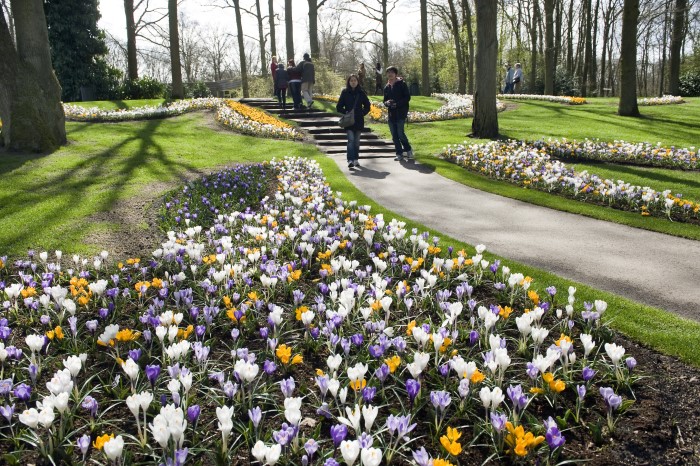
What is Naturalizing?
While you need to plant some bulbs every year, others will return and multiply on their own in a process known as naturalizing.
There are three primary types of bulbs: annuals, perennials, and ones meant for naturalizing. Ok, yeah, naturalized bulbs are perennials (of course), but they will come back reliably and prolifically for many years. That’s a good thing, very good, and worth a special mention.
Annuals are typically used to provide lots of colour and will only last for one season. Perennials will come back for multiple seasons when left undisturbed after they’re finished flowering. They go dormant and take the time to rest and regain nutrients for the next growing season.
Naturalizing bulbs are perennials that like to be left to their own devices after they are finished flowering in order to come back. The key difference from perennials is that their numbers will continue to increase every year if they have the right growing conditions. They do this by producing new little bulbs or sometimes even seeds.
You can find naturalizing bulbs planted in lawns such as crocuses or snowdrops. They can also be found in garden beds or under trees and shrubs such as daffodils, grape hyacinths, or bluebells (scillas).
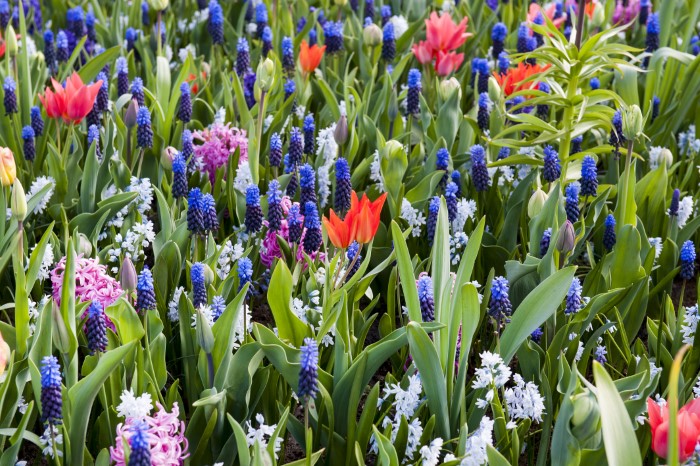
The Best Bulbs for Naturalizing
Not all bulbs are meant for naturalizing. Looks for hardy bulbs that are going to multiply, not just come back annually. Here are some great options that will give you plenty of colour without much effort.
- Grape Hyacinths Muscari armeniacum
- Botanical Tulips Tulipa
- Striped Squill Puschkinia libanotica
- Spring Meadow Saffron Bulbocodium vernum
- Dwarf Iris Iris reticulata
- Crown Imperial Fritillaria imperialis
- Checkered Lily Fritillaria meleagris
- Dropping Star-of-Bethlehem Ornithogalum nutans
- Spring Meadow Saffron Bulbocodium vernum
- Crocus Crocus
- Short Ornamental Onions Allium
- Daffodils Narcissus
- Winter Aconite Eranthis hyemalis
- Grecian Windflower Anemone blanda
- Spring Starflower Ipheion uniflorum
- Snowdrop Galanthus
- Glory-of-the-Snow Chionodoxa
- Siberian Squill Scilla siberica
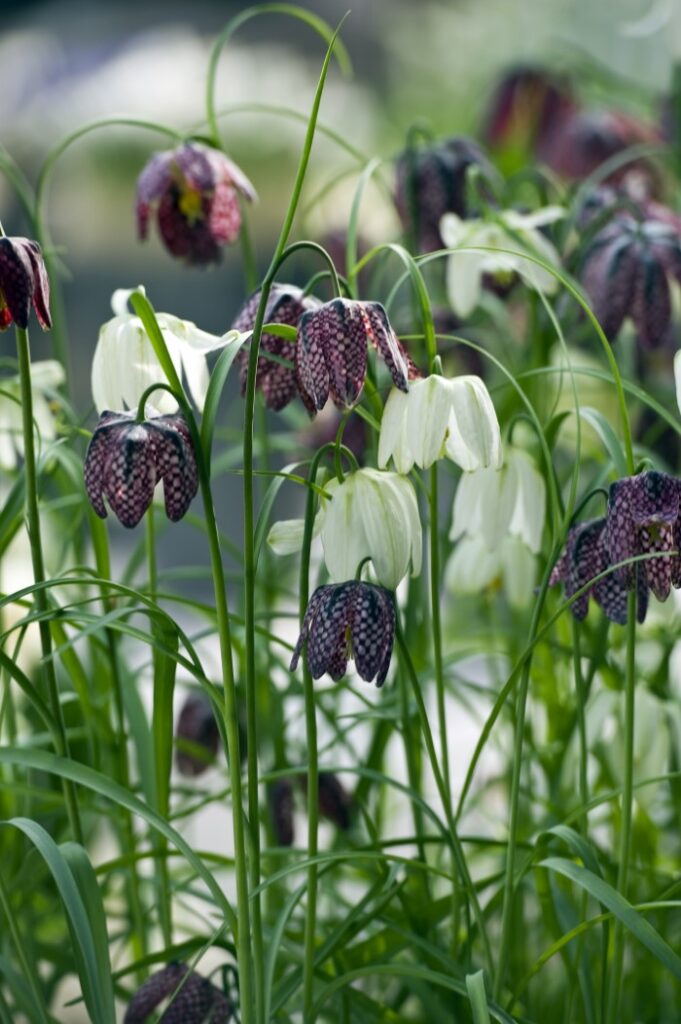
Naturalizing Tulips
Tulips may be the unofficial spring bulb given they bring so much colour and vibrancy to spring with their simple cup of blooms.
But when it comes to naturalizing tulips, you want to select the right ones. They can be difficult to naturalize. Many only bloom for one season or a few. Look for species tulips, also known as botanical tulips which, compared to the larger tulips, are more delicate but closer to their wild ancestors.
Species tulips will multiple and form clumps. The original bulbs will form bulblets (small bulbs that will eventually produce their own flowers). The flowers are 5-12 inches in height, which is smaller than your average tulip.
That said, they offer a brilliant dash of colour and work well in rock gardens, along walkways, and amidst trees when they get enough sunlight!
Tulipa biflora is a great naturalizing tulip with a white flower featuring a yellow center. Another great option includes tulipa praestans fuselier, a multi-flowering tulip that comes in a bold orangey-red.
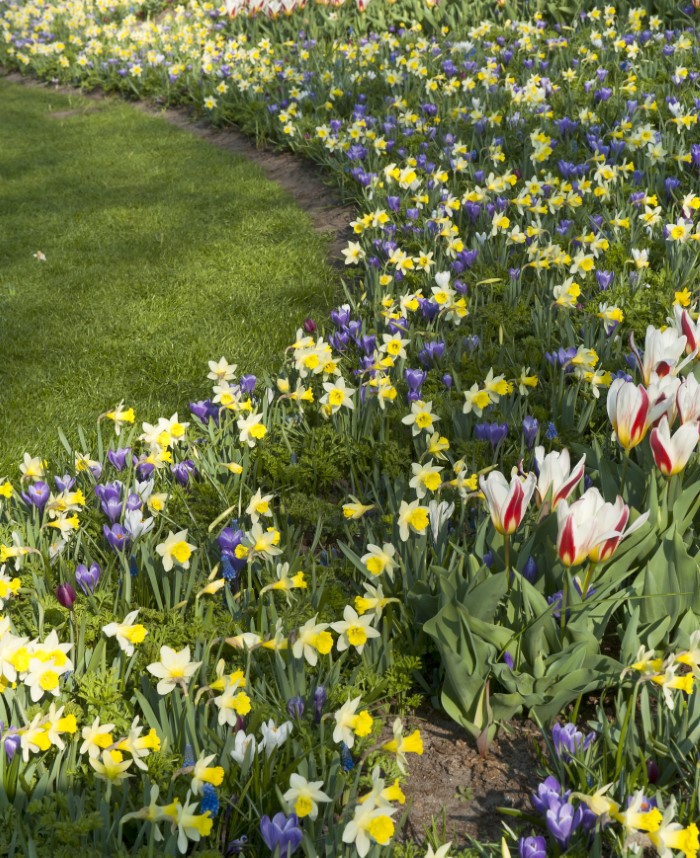
Naturalizing Daffodils
The only other flower that could compete with tulips for the ultimate spring queen would be daffodils. Their bright, cheery yellow is a stark contrast to the diminishing winter. People love them for ushering in spring and they have a lot of meaning from beauty to strength and healing.
While daffodils do produce seeds, they can also create offset bulbs like tulips. After a year or two, these bulblets will begin to bloom on their own. In my first home, the neighbours had quite the naturalized patch of tulips running along my property line. I looked fondly forward to that display each year and appreciated how prolific they are.
When it comes to choosing daffodils for naturalizing, you have wayyyy more options than tulips! Look for vigorous varieties that are known for producing these offsets. And here are some tips to make it even more simple: purchase naturalizing mixes that often have smaller than average bulbs in them + choose areas that will be fairly undisturbed so they can be left on their own to mature.
Some great early-blooming daffodils include ‘Rijnveld’s Early Sensation’, ‘Barrett Browning’, ‘Tete a Tete’, and ‘February Gold’.
For mid-season blooms, try ‘Dutch Master’, ‘Mount Hood’, ‘Ice Follies’, ‘Professor Einstein’, ‘Thalia’, and ‘Jonquil’ daffodils.
Lastly, some late flowers include ‘Cheerfulness’, ‘Actaea’, and ‘Pheasant’s Eye’.
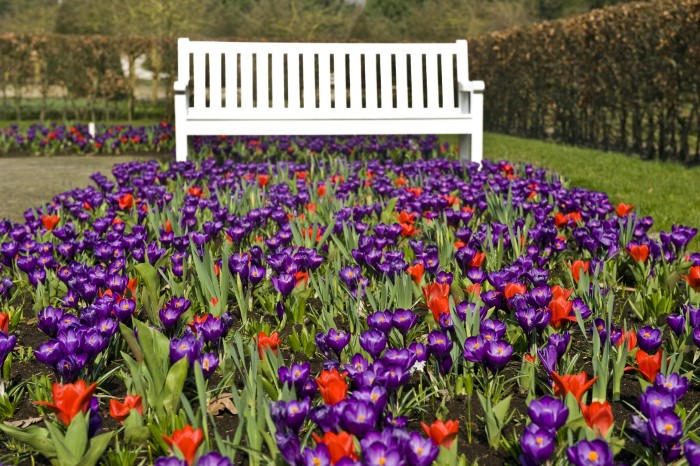
Planting a Spring Meadow Garden
While a field of one flower is gorgeous, you can recreate your own spring meadow garden using bulbs. Mix and match a variety of bulbs to create a more natural look in your yard. Pre-buy a blend (such as the one in the giveaway below – hint hint) or build your own.
Any bulbous plants with an uncultivated look will work well for the mixture. Flowerbulbs.com has a great list of bulbs to get you started that was used in the famous spring meadows at the Keukenhof Gardens in Lisse.
To plant a spring meadow garden, you will want to start off by thinking about a colour scheme and work from there. Perhaps you like bright and bold pairings to shake spring up or love the pastel tones of certain flowers.
Next, do you want all your flowers to bloom at the same time? Nope! You can either have a field full of flowers at once or throughout the spring. When ordering bulbs, look at the bloom time to plan accordingly.
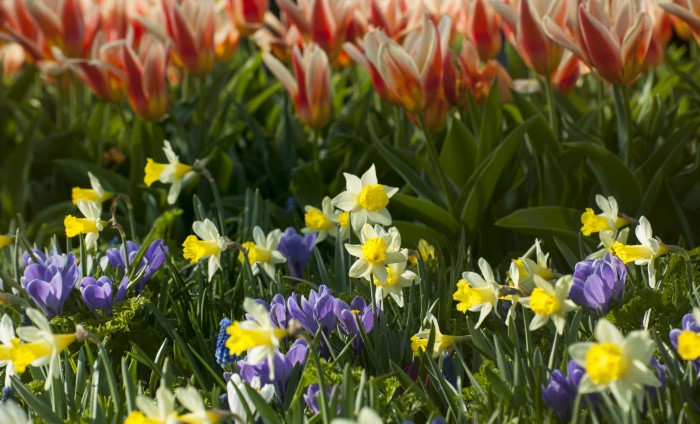
When planting, spread them out. Over time, the bulbs will multiply and fill in the gaps. Take all the bulbs you have purchased and mix them together in a bin. Pull them out at random and plant them willy nilly to get a natural spread. Plant whatever you pick up and enjoy what grows!
Most spring bulbs like full sun locations and well-draining soil as they’re prone to rot. Try to plant your spring meadow garden in an area that fits the bill.
When the flowers bloom, avoid cutting down the foliage while it’s still green. The green leaves are absorbing the nutrients they need for next year’s blooms. Wait until the leaves are at least yellow, though black and brown are better.
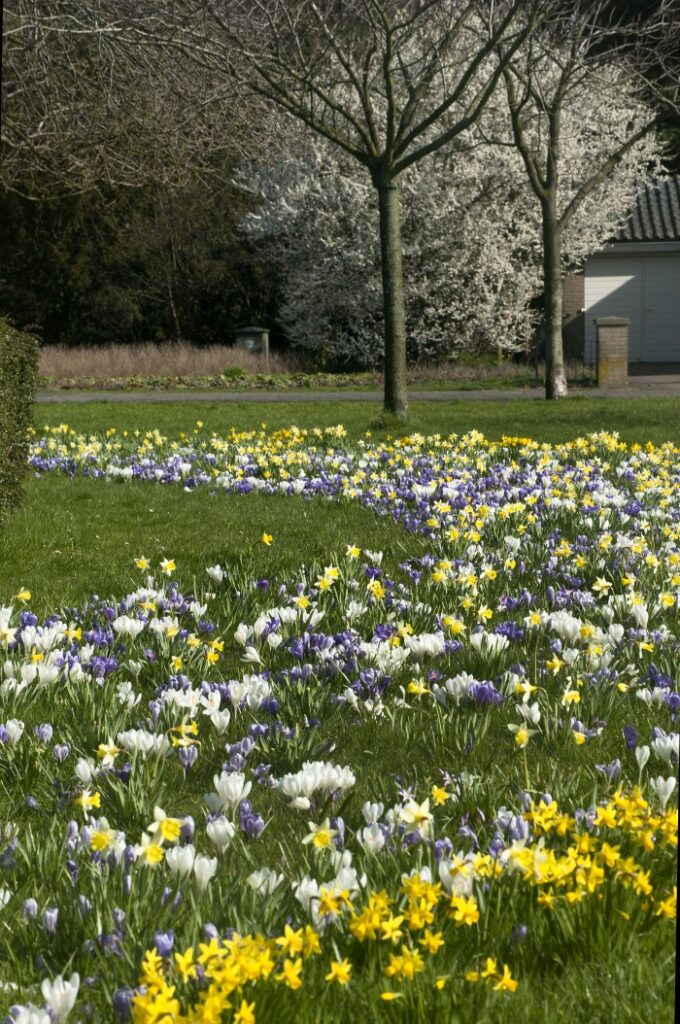
How to Naturalize Bulbs in the Lawn
While you can naturalize as many bulbs as your heart desires in your garden beds, you can also include some in your lawn. Naturalized lawns have flowers that spring up between the grass in early spring. This creates a meadow-like lawn that you can enjoy before you begin mowing for the season.
The effect is enchanting and romantic, an area you can imagine fairies flitting to and fro. Better yet, they’re SUPER low maintenance. The less you do, the better!
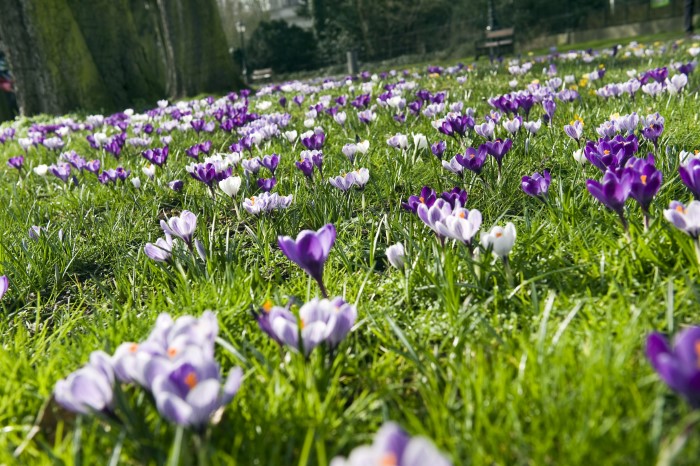
Bulbs for Naturalizing Lawns
To get this burst of spring, you can naturalize any hardy spring bulbs. You will want very early spring bloomers as they won’t interfere with lawn mowing. You can refer to the list above for naturalizing. Try to choose shorter flowers with smaller bulbs.
Crocus flowers are the most common flower for lawns. ‘Tommy; crocus (crocus tommasinianus) is a straight species that works best. They are tiny bulbs that can naturalize and spread by seed. ‘Snow’ crocus (crocus chrysanthus) can also work but they don’t multiple as fast. Traditional crocus will not work for lawns.
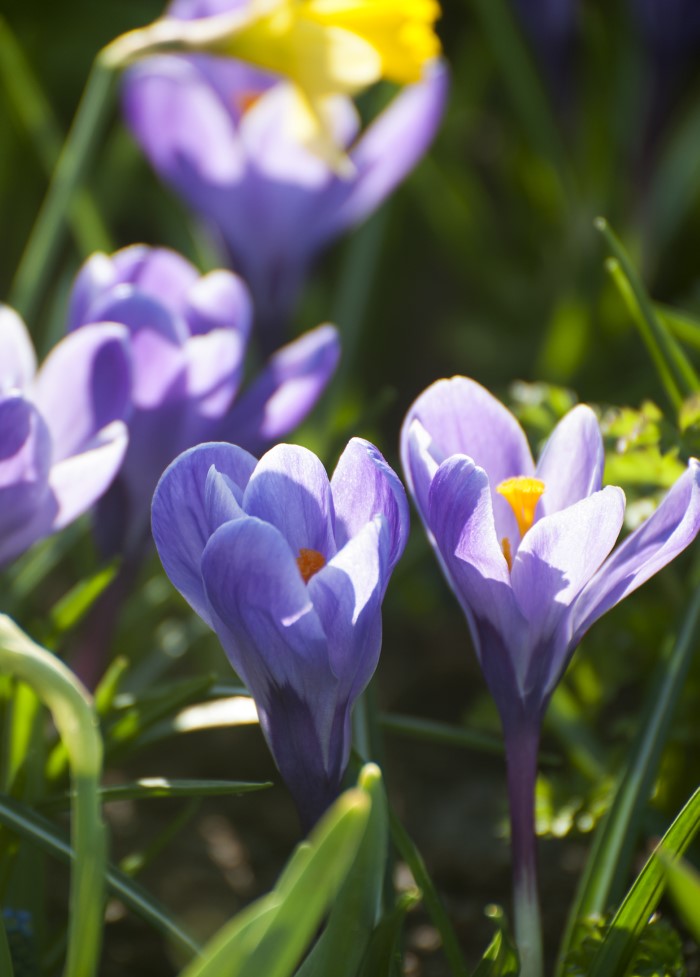
Planting Bulbs in Lawns
You will want to plant your bulbs in already growing turfgrass. The thinner the grass, the better. When it’s too thick, it makes it difficult for the bulbs to grow through. The less foot traffic for the area, the better as well.
Like the spring meadow mix, plant them by tossing them in a bin and randomly planting them where throughout the lawn.
Don’t irrigate the lawn as the bulbs like well-draining soil. When it gets too wet, the bulbs can rot. You also want to avoid the use of any herbicides or fertilizer and avoid any kind of aeration. So essentially, don’t do anything to the lawn. Sounds easy right?
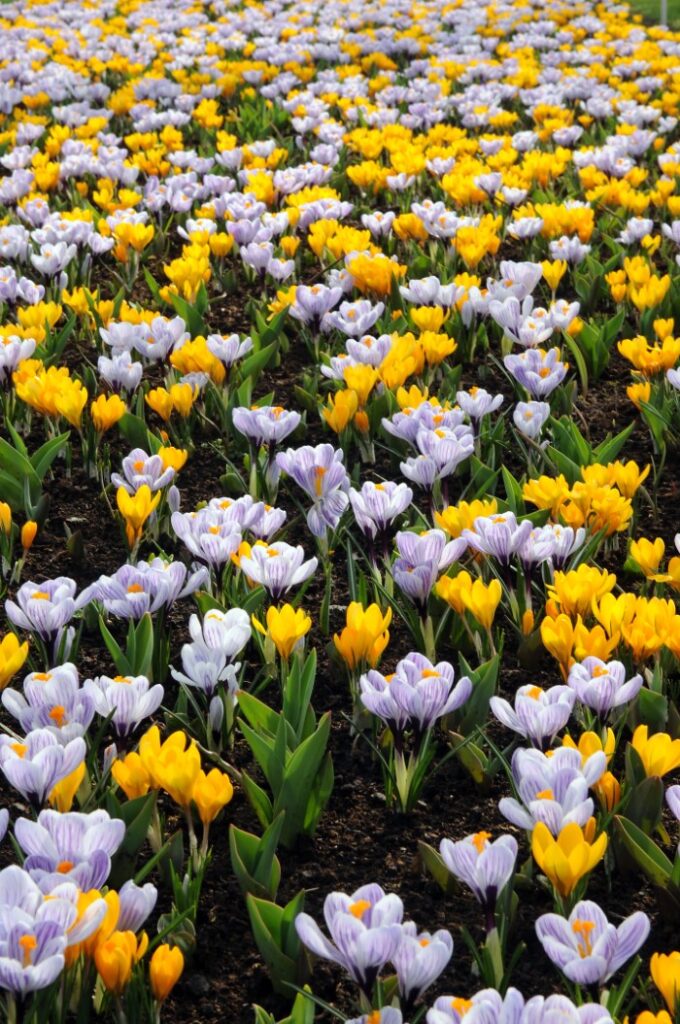
Mowing Naturalized Lawns
Don’t worry, you can still mow your lawn with naturalized bulbs! After approximately 6-8 weeks after your plants have flowered, you can begin mowing. You want to wait until all parts of the flower above ground have withered. You must wait for them to die back on their own.
If you cut flowers too early, you are cutting off the foliage and food supply and they won’t return next year. Some of the flowers also propagate by seed (such as chionodoxa, scilla, and eranthis) so you want to make sure they fully mature.
When mowing, set your mower to the highest setting. 3” is ideal. Some flowers may have a second set of growth in the fall. Just like in the spring, wait for the bulbs to die back completely before mowing again.
When mowing in the fall, switch to the lowest setting as it will give you more time in the spring before you need to mow and provide the bulbs with more sun and heat to grow.
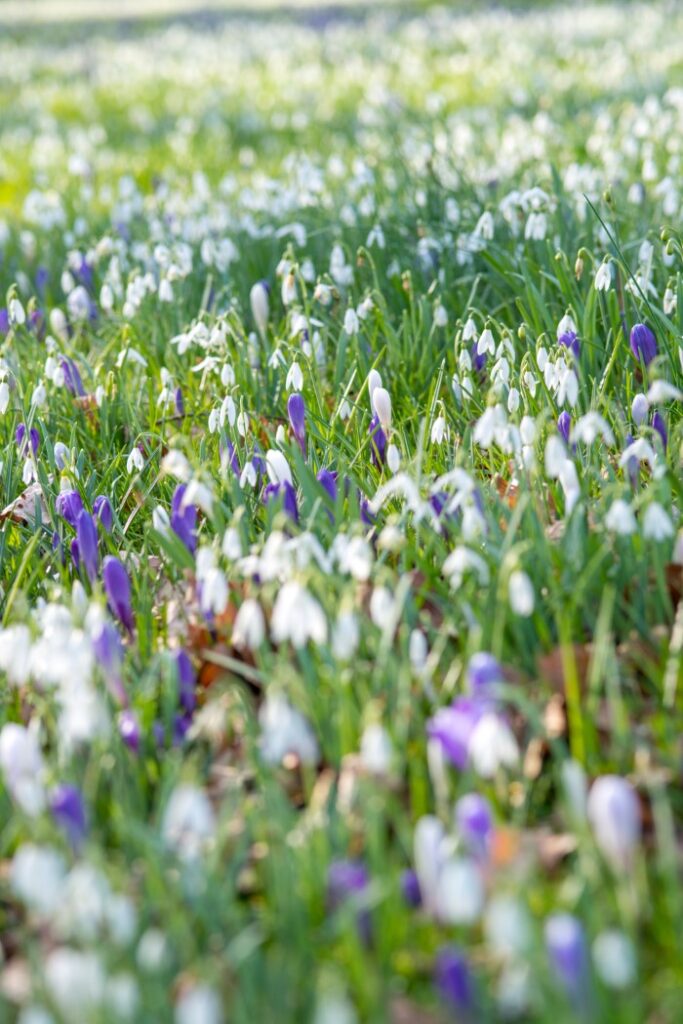
I hope you give naturalizing bulbs a try! Let me know in the comments down below if you have any more questions about how to naturalize bulbs.
Giveaway!
I’m partnering with flowerbulbs.com to give away one special blend of bulbs for naturalizing. This Eternal Spring Mixture has a ton of flowers to add warmth to the early days of spring. First, become enchanted with snowdrops and winter aconite, followed by early crocus, blue and yellow dwarf iris, larkspur, star of Holland, and Grecian windflowers. Finally, guinea-hen flowers and grape hyacinths will make an appearance mid-spring. It’s quite the mix!

This giveaway is now closed. Congratulations to the winner of the bulbs, Tiffany!
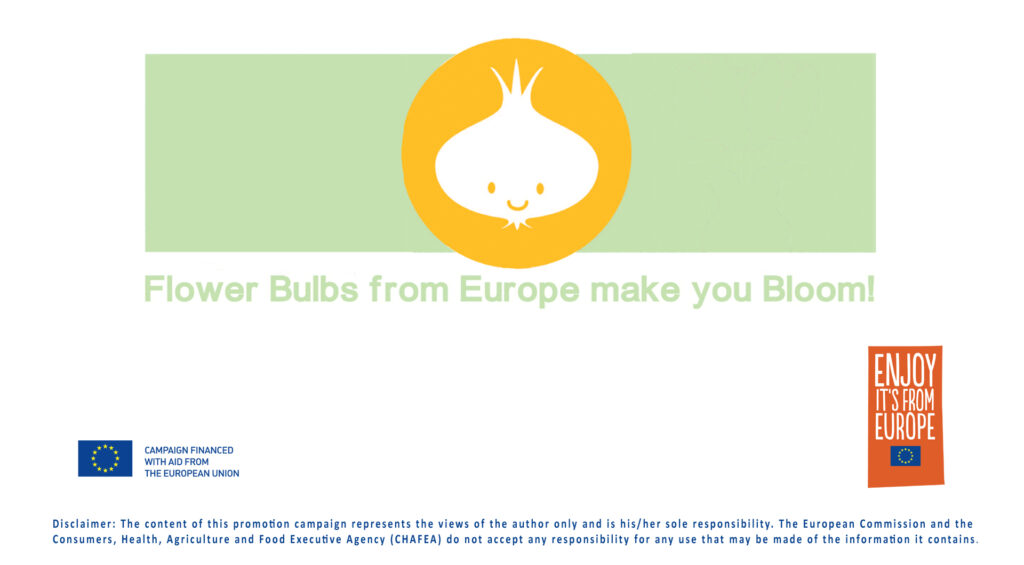

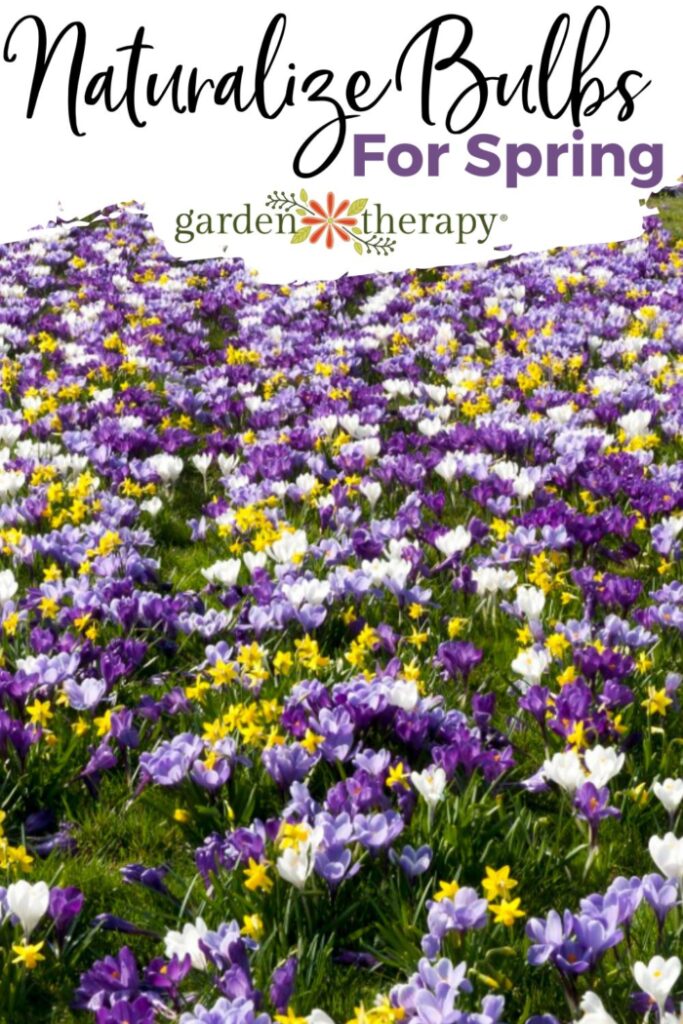



Love these flowers. I can’t wait for spring to come back around.
I love gardening and I love flowers I think it would be great to have some of these bulbs I can plant them in places where my line is not growing very well it would be a welcome addition and it would help the bees and other good insects have something to retrieve pollen from.